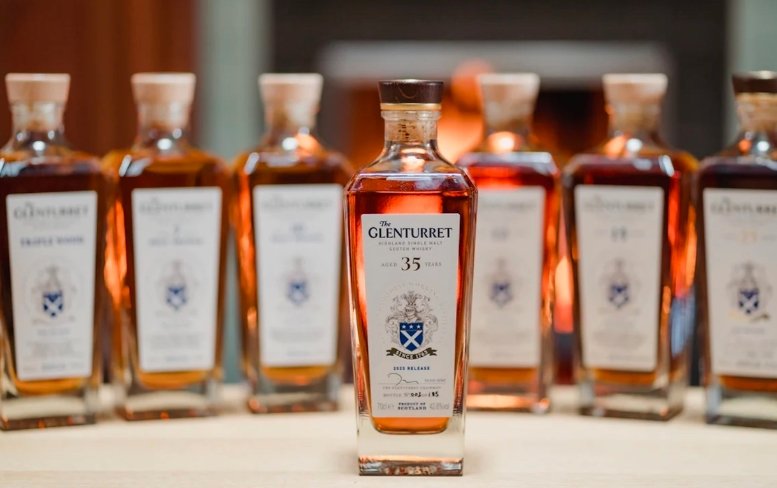In an era when luxury Scotch whisky seems to defy gravity on both price and marketing hype, The Glenturret has just done something unusual: it’s offering one of its oldest and rarest single malts for a price that, while hardly modest, undercuts many of its peers by a wide margin.
Only 50 bottles of The Glenturret 30 Year Old 2025 Annual Release exist worldwide. Priced at $2,580 (£2,100), the release stands out not only for its scarcity but for its restrained valuation. The distillery, based in Crieff and dating back to 1763, appears to be making a statement — rarity and heritage don’t always need to be accompanied by runaway inflation.
A Portfolio Built for Every Palate and Wallet
The 2025 Annual Release comprises eight bottles: six core range expressions and two limited editions. At the accessible end is the Triple Wood, retailing for $76 (£62), while the 25 Year Old — with only 210 bottles available — sits at $1,722 (£1,400).
Between those price points, the line-up covers a wide spectrum of styles and maturations, reflecting what Distillery Director Ian Renwick calls the “annual challenge” of matching existing stock to consumer expectations.
“Each expression is a reflection of the laid-down stock we have to work with — shaped by the subtle differences in cask influence, maturation and strength,” Renwick noted.
For collectors and drinkers alike, the pricing of the 25 and 30 year olds will be hard to ignore. Compared to an industry where high-age statements increasingly veer into five-figure territory — and often without justifiable rarity — Glenturret’s 2025 approach feels measured.

Rethinking the Luxury Whisky Equation
The decision to keep the 30 Year Old below $3,000 is bold in a market where scarcity often serves as an excuse for dramatic mark-ups. For context, Glenfarclas’s 70-year-old release — admittedly in a different league of age — debuted at around $27,000. Yet, even mid-range 30-year-old single malts from major brands now frequently command $4,000 to $5,000, especially in limited runs.
The Glenturret’s choice positions it as both luxury and accessible — not in absolute cost, but in relative terms for serious collectors. The distillery seems to be betting that offering tangible value, even at the upper end of the market, will resonate more than chasing prestige pricing alone.
Farewell to Peat — For Now
The 2025 release also marks a turning point in The Glenturret’s production philosophy. Managing Director John Laurie confirmed that this would be the final year peated whiskies appear in the core range.
The decision comes despite accolades for their peated expressions — including the 12 Year Old’s Gold award at the International Wine & Spirit Competition with an impressive 95 points. Sustainability pressures appear to be shaping production priorities, as the distillery weighs long-term environmental commitments against tradition.
“Producing great whiskies whilst also looking to the future and to the preservation of our craft for the years to come is a role we take very seriously,” Laurie said.
While peated releases may return as occasional limited editions, their absence from the core range will alter the character of The Glenturret’s regular offerings. For enthusiasts, that makes this year’s peated bottlings potential future collectibles.
The Collector’s Dilemma
For whisky investors and enthusiasts, the scarcity of the 30 Year Old is a double-edged sword. Fifty bottles globally means that few will ever open one, yet the pricing may tempt more drinkers than usual to break the seal. This tension — between keeping an asset and enjoying a rare sensory experience — is part of what fuels the mystique of limited releases.
Given the distillery’s careful balancing of heritage, scarcity, and price, the 2025 30 Year Old may be remembered as a turning point: a whisky that challenged the market’s prevailing narrative that more age automatically justifies higher and higher prices.


















